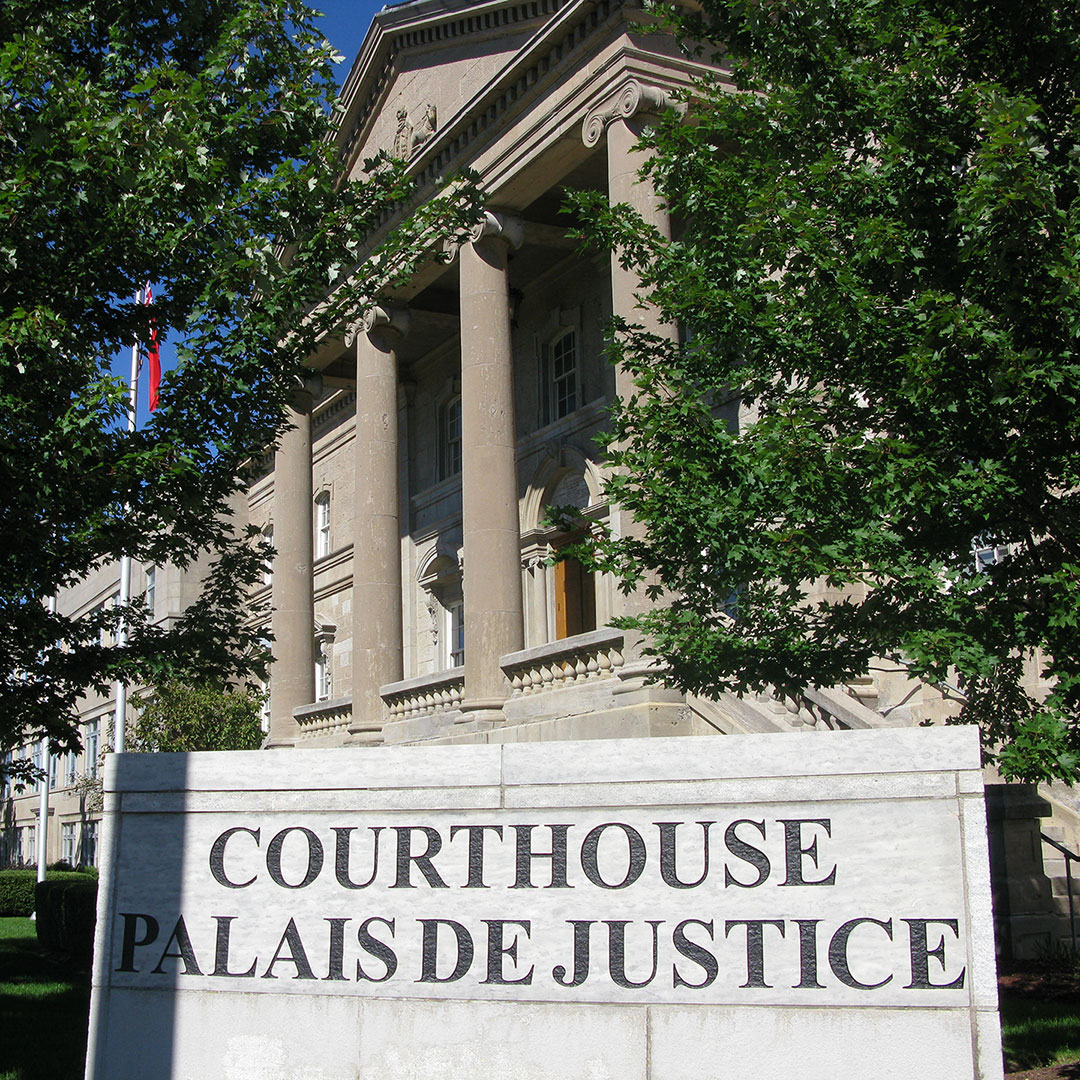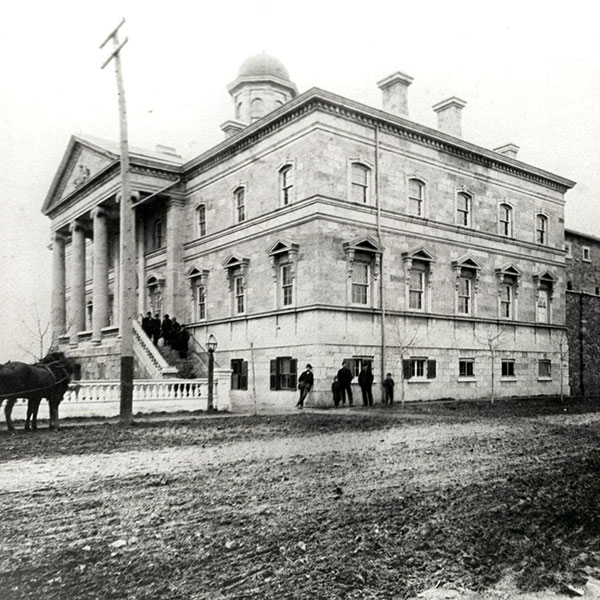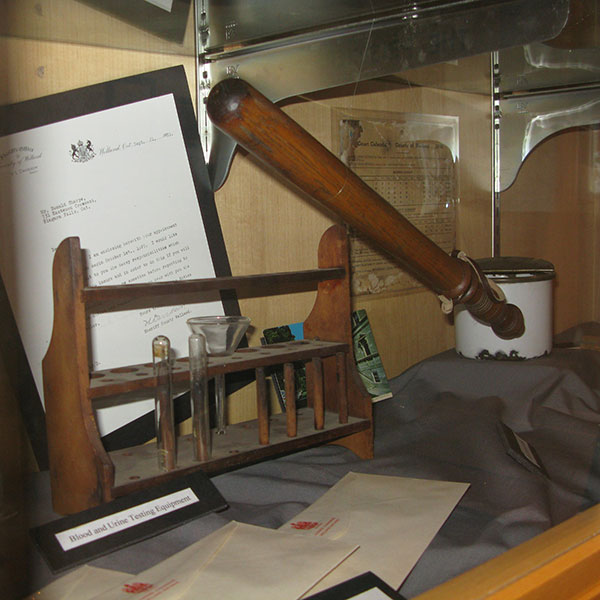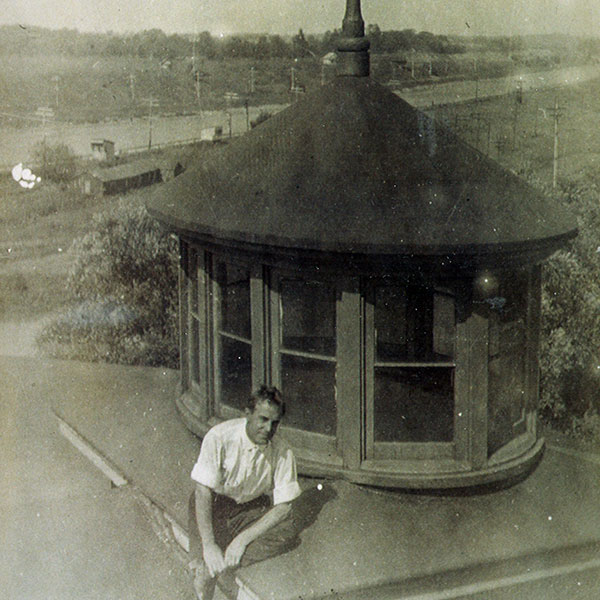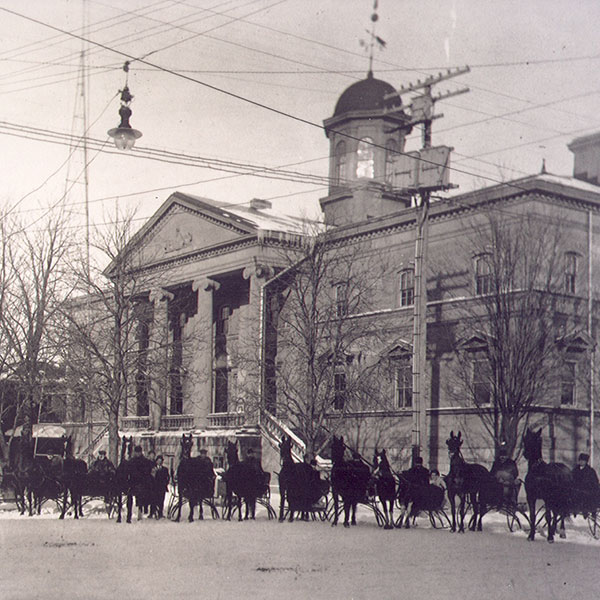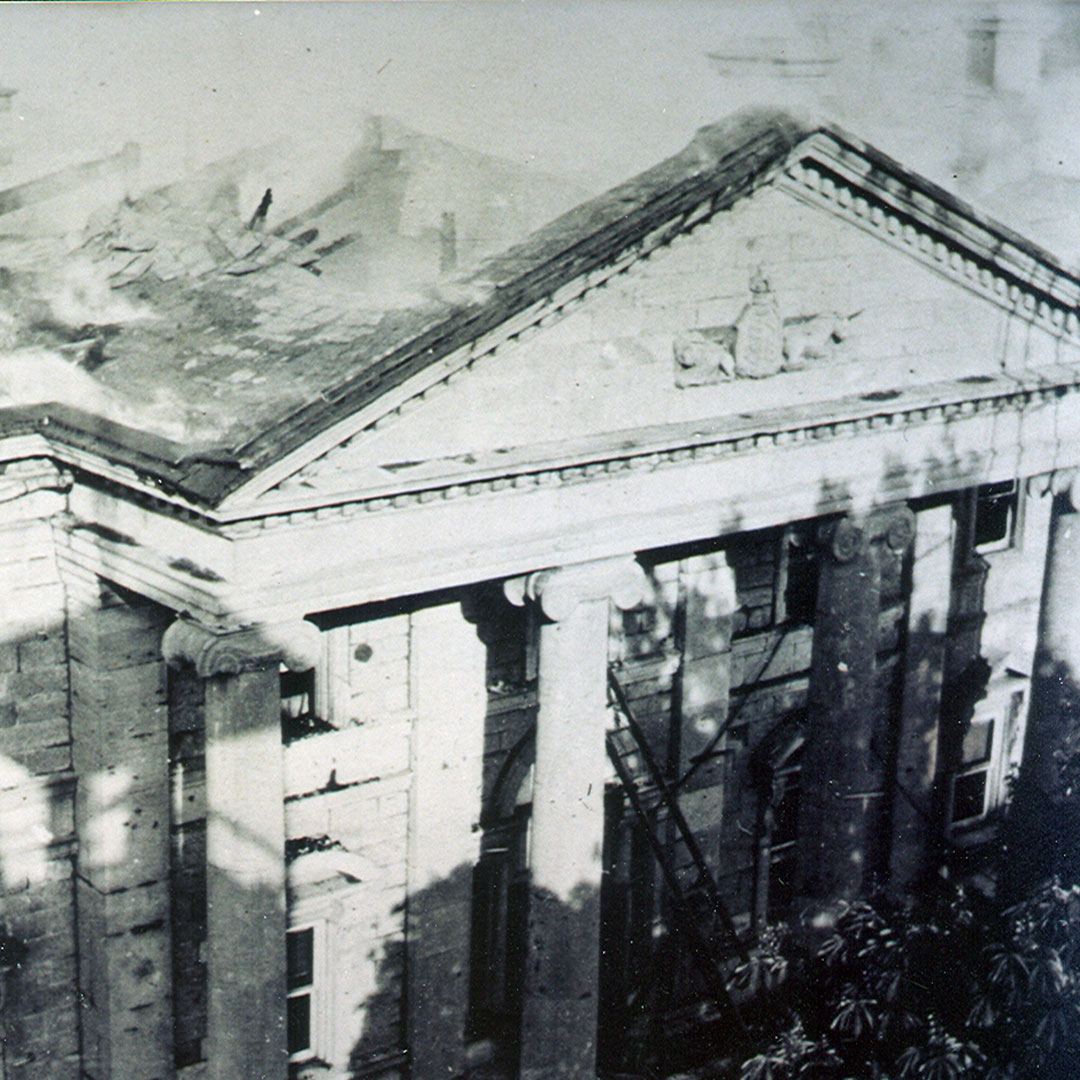Welland Courthouse
Designed by Kivas Tully, the Welland County courthouse opened in 1856, and was used to conduct the first Welland County Council meeting. The courthouse cost more than $100,000 to build, a significant amount at that time. It was practically gutted by fire 57 years later on the afternoon of Wednesday, June 11, 1913. Only the first floor remained partly untouched by the flames. When the fire was brought under control, the stone shell was practically all that was left of the structure. Defective electric wiring was said to be the origin of the blaze.
Initial courthouse staff consisted of the jail’s governor, a turnkey assistant, and three guards. The jail was reported as having a maximum capacity for 72 prisoners — 60 male and 12 female. Each block contained five cells, with a single open toilet.
The courthouse also housed a death cell for those condemned to die. A gallows set up in the execution yard allowed hangings, with the first taking place in 1859. The stone wall facing East Main Street was the site of the jail yard and gallows; however, early in the 20th century, hangings were moved inside the building.
The last execution at the courthouse took place 99 years after the first execution. On January 17, 1958, the last man was executed in the gallows by hanging for a murder conviction.
Made of Queenston limestone, the courthouse is a must-see for architectural and historical enthusiasts. Visit the museum on the second floor and take a stroll through local judicial history.
Contact
- Recreation, Sport & Culture
- Welland Community Centre,
145 Lincoln St., Welland, ON L3B 6E1 - 905-735-1700 x4000
- tourism@welland.ca
- /wellandrecandculture
- /recreationandculture
